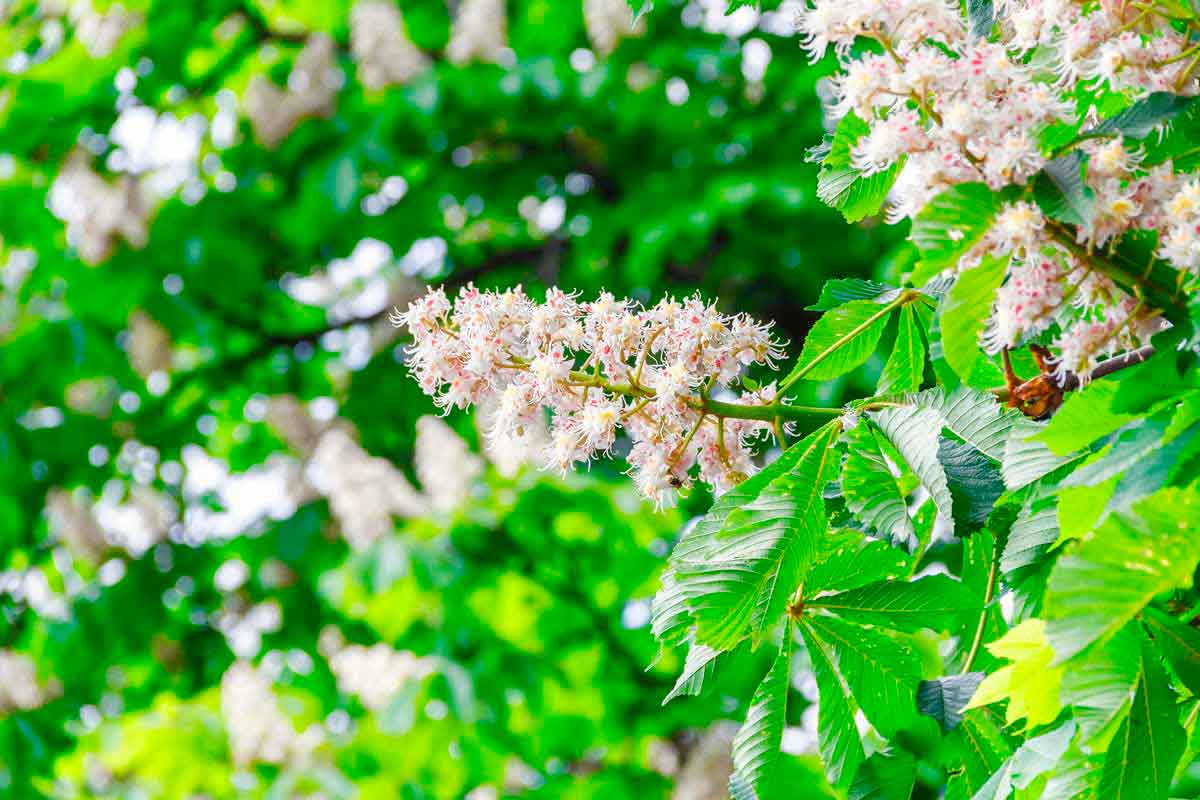Scientific name: Aesculus hippocastanum.
Common name: chestnut, horse chestnut, Indian chestnut, bitter chestnut.
English name: horse chestnut.
Parts used: seeds, flowers, leaves, bark.
Components: saponins (escin as a whole), coumarins, flavonoids (quercetin, campferol, anthocyanins, tannins, ascorbic acid, vitamin K and B vitamins).
Properties: improves microcirculation function, astringent, decongestant, vaso-constricting and anti-cellulite properties.
Directions for use: ointment or gel: topical preparations in cases of veno-lymphatic insufficiency (heavy legs, cramps, cellulite) and capillary fragility (bruising, petechiae).
Curiosity: the name derives from the Greek horse chestnut, whose fruits were to treat coughing horses. Since the early nineteenth century, horse chestnut starch was extracted and fed to animals.
Chestnuts are dangerous when fresh. The saponins they contain have a hemolytic effect and in high doses can cause delirium, anguish and depression.
 the Authentic Florentine Tradition.
the Authentic Florentine Tradition.







